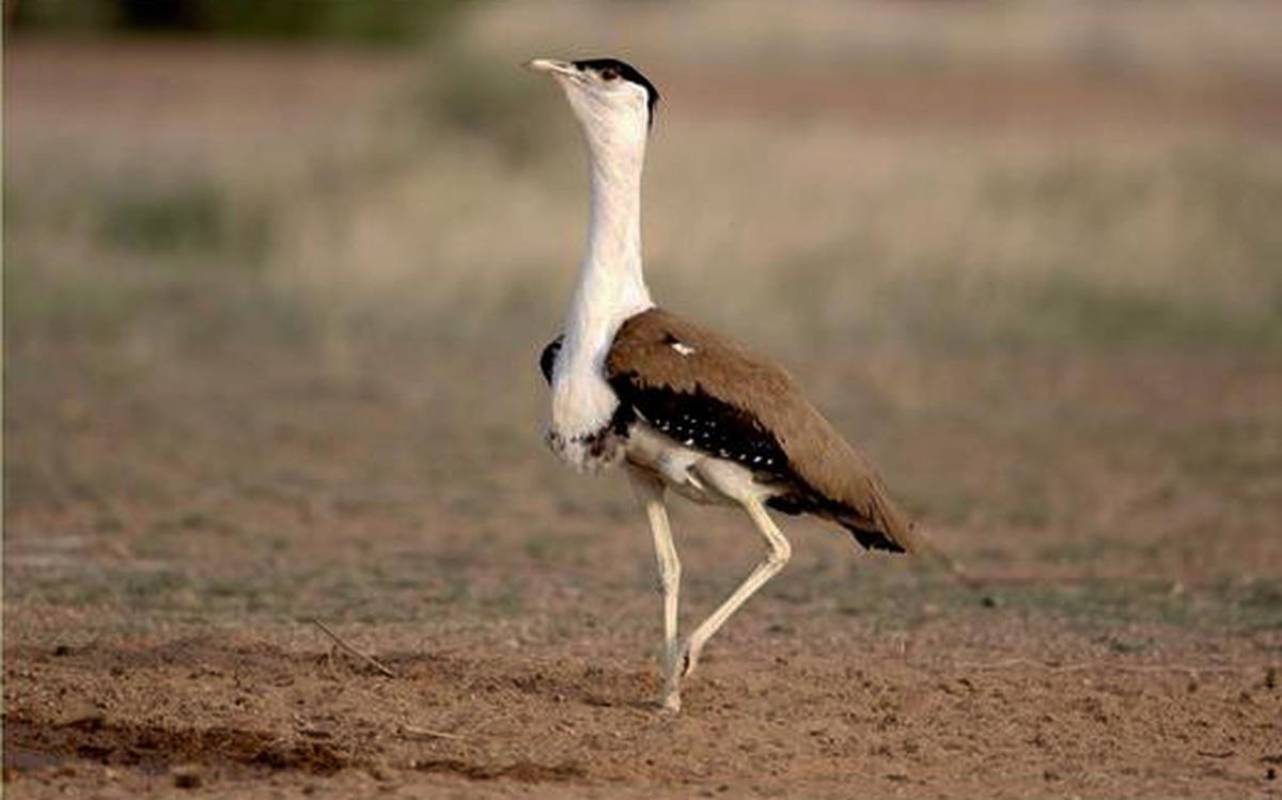Two chicks of Great Indian Bustard (GIB) born in a gap of a few days have brought cheer and raised hopes of conservationists, who have time and again warned of loss of habitat for the critically endangered bird species.
One chick was born at the Conservation Breeding Centre at Sam in Jaisalmer district while another was born at the Desert National Park earlier this week. The Park is also expecting more eggs to be hatched as this is the breeding season for the GIB.
Advertisement
The Great Indian Bustard (GIB), or Ardeotis nigriceps, is listed in Schedule I of the Indian Wildlife (Protection) Act, 1972 and as ‘Critically Endangered’ on the IUCN Red List and the National Wildlife Action Plan (2002-2016).
A large bird of about one metre in height, the GIB has a wing span of almost two metres with the adult weighing between 15-18 kg.
There are only around 150 Great Indian Bustards left across the country, including 128 in Rajasthan alone, and less than 10 birds each in Gujarat, Maharashtra, Andhra Pradesh and Karnataka, the Lok Sabha was informed on March 14.
However, wildlife conservationists claim that the number of GIBs in the wild is below 100 as of 2022.
‘Birth of Hope’ was how Shikhar Agrawal, Principal Secretary, Forest, Environment and Climate Change, Rajasthan government, described it on twitter as he shared a video of the GIB chick coming out of its shell at the Conservation Centre in Sam.
Pointing out that 80 per cent of the GIB population is outside the protected areas, Sumit Dookia, a conservation biologist, who has worked for Thar desert biodiversity, said, “It’s really a ray of hope, but we also have to concentrate our efforts on the remaining habitat that need to be protected and the rest, if possible, needs restoration. We must orient the officials to think out of the box and join hands with the locals to secure the remaining habitat.”
In April this year, one of these majestic birds had died in a collision with a power line in Jaisalmer itself. In April 2021, the Supreme Court had directed the power firms and the government to lay underground wires for all new power projects in Rajasthan and go for diverters for the existing lines.











